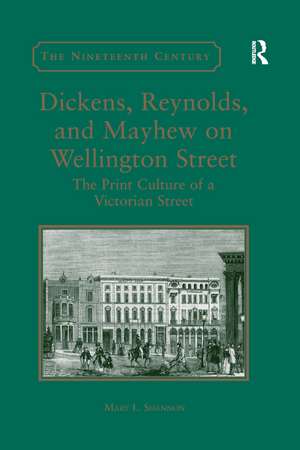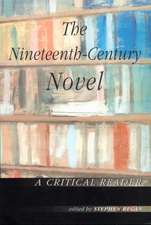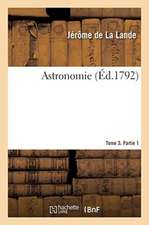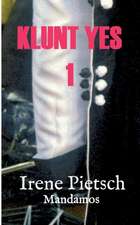Dickens, Reynolds, and Mayhew on Wellington Street: The Print Culture of a Victorian Street: The Nineteenth Century Series
Autor Mary L. Shannonen Limba Engleză Paperback – 12 dec 2019
| Toate formatele și edițiile | Preț | Express |
|---|---|---|
| Paperback (1) | 386.54 lei 6-8 săpt. | |
| Taylor & Francis – 12 dec 2019 | 386.54 lei 6-8 săpt. | |
| Hardback (1) | 999.17 lei 6-8 săpt. | |
| Taylor & Francis – 28 apr 2015 | 999.17 lei 6-8 săpt. |
Din seria The Nineteenth Century Series
-
 Preț: 204.46 lei
Preț: 204.46 lei -
 Preț: 305.89 lei
Preț: 305.89 lei -
 Preț: 310.08 lei
Preț: 310.08 lei -
 Preț: 310.65 lei
Preț: 310.65 lei -
 Preț: 215.73 lei
Preț: 215.73 lei - 18%
 Preț: 1104.89 lei
Preț: 1104.89 lei - 18%
 Preț: 995.24 lei
Preț: 995.24 lei - 26%
 Preț: 736.69 lei
Preț: 736.69 lei - 26%
 Preț: 764.62 lei
Preț: 764.62 lei - 26%
 Preț: 765.77 lei
Preț: 765.77 lei - 18%
 Preț: 1046.15 lei
Preț: 1046.15 lei - 26%
 Preț: 764.20 lei
Preț: 764.20 lei - 18%
 Preț: 999.17 lei
Preț: 999.17 lei - 26%
 Preț: 762.97 lei
Preț: 762.97 lei - 25%
 Preț: 767.88 lei
Preț: 767.88 lei - 26%
 Preț: 877.59 lei
Preț: 877.59 lei - 18%
 Preț: 992.10 lei
Preț: 992.10 lei - 18%
 Preț: 1101.00 lei
Preț: 1101.00 lei - 26%
 Preț: 763.39 lei
Preț: 763.39 lei - 15%
 Preț: 677.44 lei
Preț: 677.44 lei - 18%
 Preț: 1101.00 lei
Preț: 1101.00 lei - 25%
 Preț: 527.59 lei
Preț: 527.59 lei - 26%
 Preț: 819.90 lei
Preț: 819.90 lei - 25%
 Preț: 523.97 lei
Preț: 523.97 lei - 26%
 Preț: 766.31 lei
Preț: 766.31 lei - 26%
 Preț: 766.31 lei
Preț: 766.31 lei - 25%
 Preț: 496.53 lei
Preț: 496.53 lei - 18%
 Preț: 1022.13 lei
Preț: 1022.13 lei - 26%
 Preț: 764.62 lei
Preț: 764.62 lei - 25%
 Preț: 772.42 lei
Preț: 772.42 lei - 25%
 Preț: 497.26 lei
Preț: 497.26 lei - 25%
 Preț: 769.90 lei
Preț: 769.90 lei - 25%
 Preț: 823.17 lei
Preț: 823.17 lei - 25%
 Preț: 769.51 lei
Preț: 769.51 lei - 26%
 Preț: 766.31 lei
Preț: 766.31 lei - 25%
 Preț: 825.63 lei
Preț: 825.63 lei - 26%
 Preț: 819.90 lei
Preț: 819.90 lei - 25%
 Preț: 767.88 lei
Preț: 767.88 lei - 26%
 Preț: 766.24 lei
Preț: 766.24 lei - 26%
 Preț: 764.62 lei
Preț: 764.62 lei - 26%
 Preț: 737.19 lei
Preț: 737.19 lei - 25%
 Preț: 740.88 lei
Preț: 740.88 lei - 26%
 Preț: 820.32 lei
Preț: 820.32 lei - 18%
 Preț: 1046.94 lei
Preț: 1046.94 lei - 26%
 Preț: 764.62 lei
Preț: 764.62 lei - 26%
 Preț: 764.62 lei
Preț: 764.62 lei - 15%
 Preț: 670.29 lei
Preț: 670.29 lei - 26%
 Preț: 735.57 lei
Preț: 735.57 lei - 26%
 Preț: 765.01 lei
Preț: 765.01 lei
Preț: 386.54 lei
Nou
Puncte Express: 580
Preț estimativ în valută:
74.03€ • 76.27$ • 62.01£
74.03€ • 76.27$ • 62.01£
Carte tipărită la comandă
Livrare economică 25 februarie-11 martie
Preluare comenzi: 021 569.72.76
Specificații
ISBN-13: 9780367880309
ISBN-10: 036788030X
Pagini: 278
Dimensiuni: 156 x 234 x 15 mm
Greutate: 0.45 kg
Ediția:1
Editura: Taylor & Francis
Colecția Routledge
Seria The Nineteenth Century Series
Locul publicării:Oxford, United Kingdom
ISBN-10: 036788030X
Pagini: 278
Dimensiuni: 156 x 234 x 15 mm
Greutate: 0.45 kg
Ediția:1
Editura: Taylor & Francis
Colecția Routledge
Seria The Nineteenth Century Series
Locul publicării:Oxford, United Kingdom
Cuprins
Morning: 'the smallness of the world'. Afternoon: 'dissolute and idle persons'. Evening: 'the showman introduces himself'. Night: 'the compass of the world and they that dwell therein'. Conclusion: 'very curiously brought together' by Bleak House.
Notă biografică
Mary L. Shannon received her BA from the University of Cambridge and her PhD from King’s College London. She is a postdoctoral research fellow in the Department of English and Creative Writing, University of Roehampton, London. She works on early nineteenth-century print culture and visual culture, with particular interests in literary networks, cultural geography, periodicals, and literature about London.
Recenzii
2016 winner of The Robert and Vineta Colby Scholarly Book Prize
From the Committee: “Mary L. Shannon’s book is an innovate expansion of the current interest in tracing networks into a consideration of the more concrete juxtaposition of bodies and buildings in space. Structured creatively around a day in the life of the street, the book entices us into seeing what would have been obvious to the Victorian eye and ear, but which our standard narratives have occluded. Shannon connects some of the more ephemeral products of the press and the situation of their production with canonical works, such as Bleak House, produced in the same milieu.It’s a book that models new ways to do our business.”
Awarded the Colby Book Prize
'Mary L. Shannon’s informative book offers an entirely new way to think about print culture. In focusing on Wellington Street off the Strand, where important Victorian writers such as Dickens, Mayhew, and Reynolds maintained their offices, she demonstrates the significance of geography for understanding the print networks that developed in midcentury London.' - Anne Humpherys, City University of New York, USA, author of Travels into the Poor Man’s Country: The Work of Henry Mayhew
“Shannon’s exemplary research takes her on a series of errands in order to reconstruct the working practices of Wellington Street in the period under scrutiny: examining metropolitan and borough archives, city guide books, directories, advertisements, maps and playbills, as well as an admirable range of types and genres of literary production.” - John Drew, University of Buckingham, Dickens Quarterly
“This is such a good book. Much of its immediate impact lies in its striking originality, of structure and of method, even if sometimes not all of it comes off. And while the book is risktaking, exploratory, and conspicuous for the breadth of its data, its discourse is largely traditional and verbal, its readings are ‘close’ and wide but not distant.” - Laurel Brake, The London Journal
“Certainly this is a book which deserves a wide readership of its own. Like Wellington Street itself, Shannon’s monograph and the new model of the literary network that she proposes has the potential for impact far beyond its apparent compass.” - Jessica Hindes, University of London
“The primary research here – on Melbourne Punch, ‘Orion’ Horne and the influence of Dickens and Sala upon Marcus Clarke’s night-walking sketches – addresses an important gap in the study of nineteenth-century Anglo-Australian transnational exchanges to date. It also extends the range of scholars and readers for whom this rich and extraordinarily detailed book is likely to be of interest: not only Dickensians, but those working on Victorian literary and visual cultures, nineteenth-century periodicals and newspapers, Melbourne’s Bohemia and anyone interested in the historical geography of urban space.” - Catherine Waters, University of Kent
“This, as I hope this review has made clear, is a work of impressive research … in which intensive and meticulous historical, biographical and topographical research come together. The result is to provide us with a valuable addition to our knowledge and understanding of the way in which certain notable print networks, both in London and in Melbourne, were operating in the mid-nineteenth century.” - Michael Slater, Birkbeck, University of London, UK
From the Committee: “Mary L. Shannon’s book is an innovate expansion of the current interest in tracing networks into a consideration of the more concrete juxtaposition of bodies and buildings in space. Structured creatively around a day in the life of the street, the book entices us into seeing what would have been obvious to the Victorian eye and ear, but which our standard narratives have occluded. Shannon connects some of the more ephemeral products of the press and the situation of their production with canonical works, such as Bleak House, produced in the same milieu.It’s a book that models new ways to do our business.”
Awarded the Colby Book Prize
'Mary L. Shannon’s informative book offers an entirely new way to think about print culture. In focusing on Wellington Street off the Strand, where important Victorian writers such as Dickens, Mayhew, and Reynolds maintained their offices, she demonstrates the significance of geography for understanding the print networks that developed in midcentury London.' - Anne Humpherys, City University of New York, USA, author of Travels into the Poor Man’s Country: The Work of Henry Mayhew
“Shannon’s exemplary research takes her on a series of errands in order to reconstruct the working practices of Wellington Street in the period under scrutiny: examining metropolitan and borough archives, city guide books, directories, advertisements, maps and playbills, as well as an admirable range of types and genres of literary production.” - John Drew, University of Buckingham, Dickens Quarterly
“This is such a good book. Much of its immediate impact lies in its striking originality, of structure and of method, even if sometimes not all of it comes off. And while the book is risktaking, exploratory, and conspicuous for the breadth of its data, its discourse is largely traditional and verbal, its readings are ‘close’ and wide but not distant.” - Laurel Brake, The London Journal
“Certainly this is a book which deserves a wide readership of its own. Like Wellington Street itself, Shannon’s monograph and the new model of the literary network that she proposes has the potential for impact far beyond its apparent compass.” - Jessica Hindes, University of London
“The primary research here – on Melbourne Punch, ‘Orion’ Horne and the influence of Dickens and Sala upon Marcus Clarke’s night-walking sketches – addresses an important gap in the study of nineteenth-century Anglo-Australian transnational exchanges to date. It also extends the range of scholars and readers for whom this rich and extraordinarily detailed book is likely to be of interest: not only Dickensians, but those working on Victorian literary and visual cultures, nineteenth-century periodicals and newspapers, Melbourne’s Bohemia and anyone interested in the historical geography of urban space.” - Catherine Waters, University of Kent
“This, as I hope this review has made clear, is a work of impressive research … in which intensive and meticulous historical, biographical and topographical research come together. The result is to provide us with a valuable addition to our knowledge and understanding of the way in which certain notable print networks, both in London and in Melbourne, were operating in the mid-nineteenth century.” - Michael Slater, Birkbeck, University of London, UK
Descriere
Between 1843 and 1853, Household Words, Reynolds’s Weekly Newspaper, the Examiner, Punch, and the serial edition of London Labour and the London Poor were all published from Wellington Street off the Strand, which housed the offices of Charles Dickens, G.W.M. Reynolds and Henry Mayhew. Shannon examines the implications of their close proximity for










![The Mysteries of London, Vol. II [Unabridged & Illustrated] (Valancourt Classics)](https://i1.books-express.ro/bt/9781943910168/the-mysteries-of-london-vol-ii-unabridged-illustrated-valancourt-classics.jpg)














